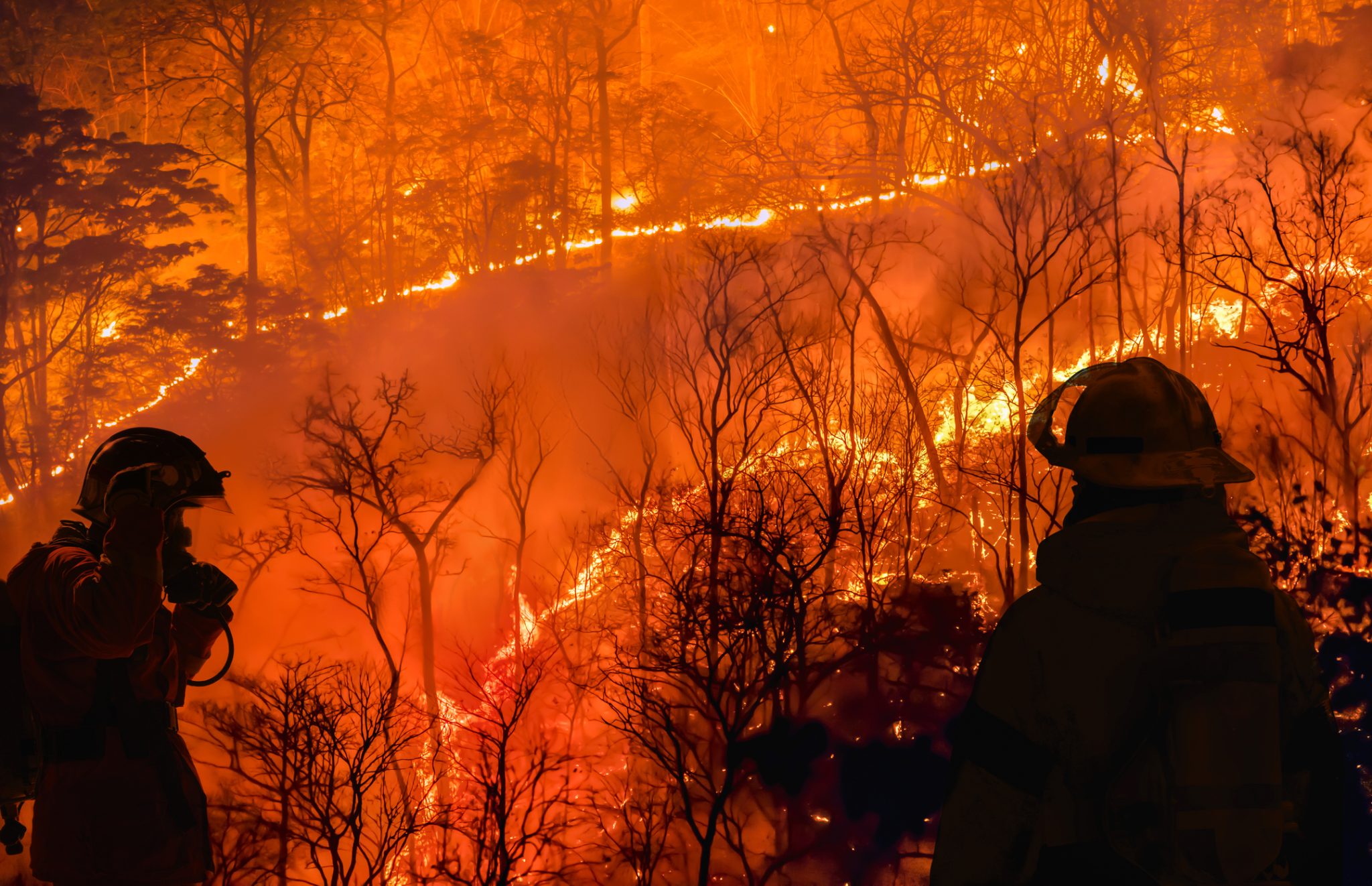High intensity wildfires pose a very serious threat to human, animal, and plant populations. Until greenhouse gas emissions are drastically reduced, climate change will continue to make wildfires more dangerous. Luckily, there are time-tested methods that can be employed to lower the amount of damage caused by these fires.

How Can Controlled Burns Help Reduce Wildfires?
Controlled burns are one of the main preventative tools people can use to lessen the severity of wildfires. Unlike a wildfire, controlled burns are carefully orchestrated, low intensity burns intentionally started by a team of fire experts. They work to prevent wildfires by clearing a portion of a forest’s dried out vegetation, which can provide fuel for larger fires – causing them to spread uncontrollably. They’re also MUCH safer than they might seem at first glance. Annually, the U.S. Forest Service conducts 4,000 to 5,000 controlled burns and over 99% of them stay within their targeted area and are completely extinguished on schedule.
In addition to preventing out of control fires, controlled burns are able to regenerate ecosystems and support the life cycles of plants and animals. For example, salmon utilize the aftermath of a fire to find new habitats in which to lay eggs. Landslides caused by wildfires introduce large amounts of rocks and debris into rivers, creating new gravel beds perfect for egg laying. As time goes on, these gravel beds are pushed further downstream. Without another fire, the upstream beds can’t be replenished, disrupting the salmon’s breeding habits.
Ways To Prevent Wildfires: Indigenous Fire Management
North America’s ecosystems evolved to coexist with wildfires. The continent’s earliest citizens understood this and developed systems of controlled burns that served both forests and the people who made them their homes. The Yurok, Karuk, and Hoopa tribes of Northern California are one example. Their use of fire cleared forests of dangerous levels of dried plants and promoted the growth of important food sources and basket-weaving materials.
Unfortunately, throughout the bulk of the 20th century, these traditional burning practices were severely suppressed by U.S. federal fire policy. The Yurok tribes and many others faced penalties for setting fires on both public land and reservations. At this time, the federal government’s strategy was to prevent all fires – regardless of their cultural importance or environmental benefit. Intensely dry conditions from climate change and a century’s worth of fire bans set the stage for the infernos that firefighters are grappling with now.
Rolling Back Fire Bans for the Sake of Wildfire Prevention
Luckily, strides are being made in changing the minds of policy makers. In 2022, the California state government initiated the “Strategic Plan for Expanding the Use of Beneficial Fire”. This plan allows California’s indigenous communities to work in tandem with the state’s firefighters to prevent large-scale fires. Tribes within California are now permitted to utilize their cultural burns on up to 400,000 acres annually without facing any governmental persecution. Other states, like Oregon and Washington, are following a similar path and recognizing the life-saving potential of these low-intensity burns. Hopefully additional states follow in their footsteps.
A Word of Hope
Wildfires are a threat to life across the planet – this shouldn’t be denied or understated. However, we aren’t defenseless against them. We have centuries old fire containment methods, modern technology, and water infrastructure available to us to keep them in check. If we continue leaning into indigenous methods of forest management and reduce our global carbon emissions, today’s hot blazes will burn a little cooler tomorrow.
Image credits: Forest fires (Photo 281145415 © Toa555 | Dreamstime.com); Controlled burn (Photo 6732916 © Louis Neal | Dreamstime.com)



